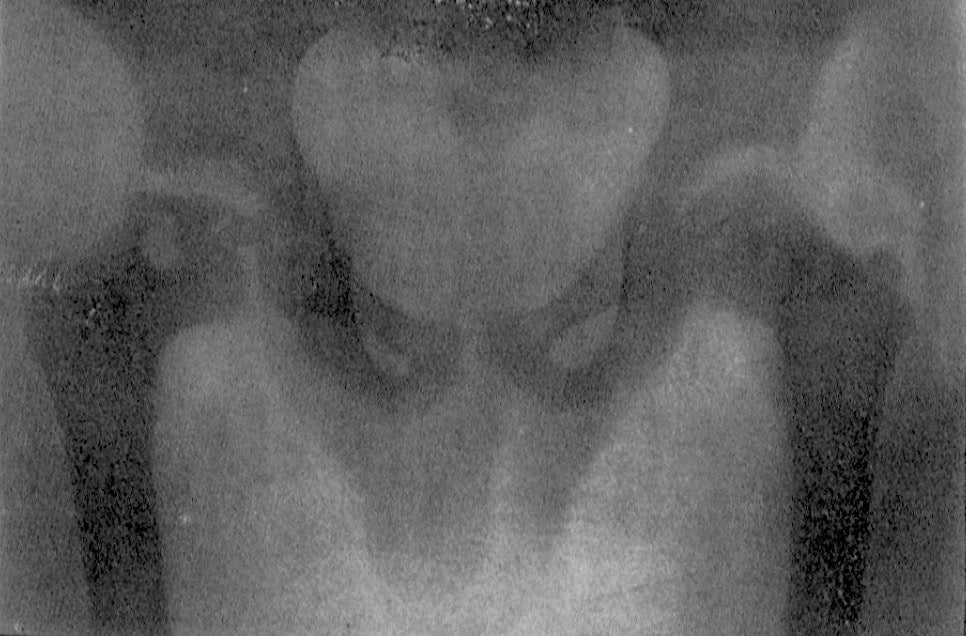Arthur Legg

Arthur Thornton Legg (1874 – 1939) was an American orthopedic surgeon.
The representative of the Harvard Infantile Paralysis Commission at the Children’s Hospital, Boston. He took charge of the infantile paralysis cases at the Lakeville State Sanatorium, Middleboro, Massachusetts, and was consultant to the State Department of Public Health
Best known for his discovery of the hip condition known as Legg’s disease (LCPD)
Biography
- Born April 19, 1874 in Chelsea, Massachusetts
- 1900 – Graduated, Harvard Medical School
- 1902 – Commenced orthopedic training
- 1903-1939 Children’s Hospital, Boston
- 1908 – Member, American Orthopedic Association
- Assistant professor of orthopedic surgery, Harvard Medical School
- 1933 – Vice president of the American Orthopedic Association
- Died July 8, 1939
Medical Eponyms
Legg-Calvé-Perthes disease (LCPD); (1910)
LCPD develops as a result of proximal femoral epiphysis ischaemia of unknown aetiology; aka avascular necrosis (AVN) of the proximal femoral head.
The disease is usually insidious in onset and may occur after an injury to the hip. It is most common in male children aged 4-10 years, unilateral in 90% of cases. In cases which are bilateral, the joints are involved successively, not simultaneously.
In 1910, Legg, Calvé and Perthes independently reported a hip disease in children with a symptomatic picture resembling that described by Henning Waldenström in 1909. These authors believed the process to be unrelated to tuberculosis:
Arthur Thornton Legg: 5 cases between the ages of 5 and 8 years. Legg was most inclined to believe that the disease was caused by trauma because he had found such in all of his cases.
The fifth case (Dr. Goldwaith’s) was a boy of six, who came to him in December, 1908. One year previous he had a fall in which the legs were spread apart. He was lame for a week, and apparently recovered. Seven months later a limp on the left was noticed. He was restless at night and had indefinite pain referred chiefly to the left groin…
The Roentgenogram showed a flattened head and a distinct necrotic area just outside the epiphyseal line in the neck, with apparently some thickening of the neck…
…and at this time it seems to me that a possible explanation of the condition is that the injury may indirectly cause this condition by causing injury or displacement at the epiphyseal line, whereby the nutrition of the head, coming mostly through the neck, is impaired, and by the poorly nourished epiphysis bearing on the acetabulum, it becomes flattened.
Legg A. 1910

Major Publications
- Legg AT. The cause of atrophy in joint disease. American Journal of Orthopedic Surgery, 1908-1909; 6: 84-90.
- Legg AT. An obscure affection of the hip-joint. Boston Medical and Surgical Journal. 1910; 162: 202–204. [Reprint: Clin Orthop Relat Res. 2006; 451: 11-13. PMID 17038923]
- Legg AT. The Importance of the Early Recognition of Acute Arthritis of the Hip-Joint in Infants. The Boston Medical and Surgical Journal, 1914; 170(14): 527–528.
- Legg AT. Osteochondral trophopathy of the hip joint. Surgery, Gynecology & Obstetrics, 1916; 22: 307
- Legg AT. Differential Diagnosis of Diseases of the Hip-Joint in Children. Boston Med Surg J 1920; 182:602-606
- Legg AT. Legg-Perthes’ disease with special reference to prognosis & treatment. 1929; 6(6): 793
- Legg AT, Merrill JB. Physical therapy in infantile paralysis. 1932
- Legg AT. The early treatment of poliomyelitis and the importance of physical therapy: Chairman’s address. JAMA. 1936; 107(9): 633–635.
- Legg AT. An Analysis of the 1935 Epidemic of Infantile Paralysis in Massachusetts. N Engl J Med 1937; 217:507-511
References
Biography
- Mostofi SB. Arthur Thornton Legg. Who’s Who in Orthopedics. Springer. 2005: 189
- Bibliography. Legg, Arthur T. WorldCat Identities
Eponymous terms
- Schulitz KP, Dustmann HO. Arthur Thornton Legg (1874–1939). In: Morbus Perthes: Ätiopathogenese, Differentialdiagnose, Therapie und Prognose. Springer. 1991: 8-10
[cite]
Eponym
the person behind the name
